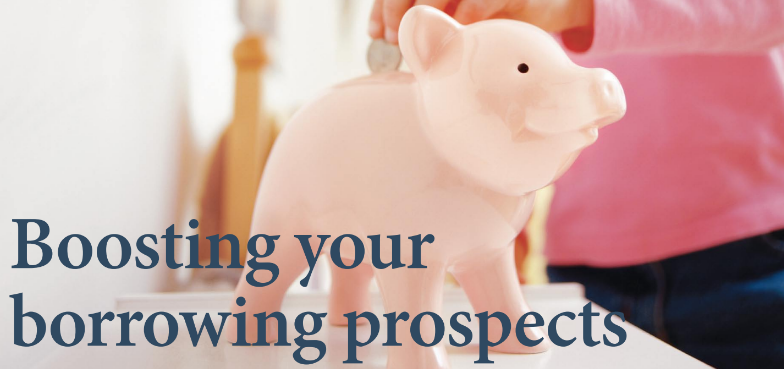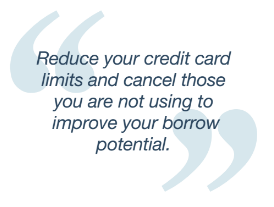Sep 16
While refinancing your home loan may seem overwhelming at first, it’s less complicated than you might think.
With historically low interest rates and increased competition across the home loan industry, lenders are keen to get your business. When you first took out a home loan, you probably paid very close attention to interest rates. Over time though, different lenders adjust rates at different levels, meaning there can be large discrepancies between one lender and another over time.
Remember that despite the Reserve Bank’s decision to leave interest rates on hold, lenders are running their own race and still adjusting interest rates as they see fit.
Refinancing your mortgage may therefore be a relatively simple way to save thousands and get a better deal on your home loan.
1. What is Refinancing?
Refinancing is essentially moving from your existing home loan to a new home loan. The most common reasons people refinance are to get better interest rates, access to more or improved loan features, or to consolidate several debts into one mortgage. When you refinance, you can stay with your current lender – which can reduce hassle if you do all of your banking with the same institution – or switch to a new one.
2. Make the call
A great place to start is by calling your mortgage broker. A broker can compare hundreds of loan options across both bank and non-bank lenders to find a loan that meets your needs – saving you time and money.
3. Review Your Options
Once you know where you stand with your current lender, it’s time to do some homework. You’ll want to find out if you can get a better rate – or more suitable loan conditions – elsewhere. Remember, it’s not just the ‘big four’ banks; there are lots of smaller banks and non-bank lenders out there.
Your broker can help you identify the best loans for your circumstances, negotiate with lenders on your behalf, and explain home loans that have features that might be important to you. If you want more flexibility in your loan, for example, they might suggest switching to a mortgage that lets you make unlimited additional repayments, or a loan that has a redraw facility and an offset account. Alternatively, you might want to stick with your current loan but access your equity for an investment property. After you’ve decided what you want from a new home loan, your broker will review your financial situation to estimate the amount you can borrow.
4. Submit Your Application
Your broker usually collates all the paperwork and handles lodgement on your behalf. Make sure the terms of the loan have been explained to you, and ask questions if anything is unclear. You should understand:
- the length of the new loan
- features of the new loan, such as a redraw facility or offset account
- the interest rate of the new loan
- what your repayments will be on the new loan
- all fees and charges associated with refinancing, including exit fees, start-up fees, new loan establishment fees and settlement fees
any applicable government charges
5. Approval
Once your application is approved, you will receive a letter of offer and contract for the new loan. After signing the contract, you will reach settlement. Your new home loan is then drawn down, which means the funds from your new loan are used to pay off your current home loan. The Discharge of Mortgage document will be registered with the Land Titles Office for you. Your new lender will lodge a Discharge of Mortgage document with the Land Titles Office. From here you can start making repayments on your new loan.
Don’t let the approval process concern you – it may sound complicated, but if you’re using a broker it basically happens in the background. It’s a good idea to review the mortgage market at least once a year, to make sure your home loan is still the best one for your needs. When you do this, working with your broker will allow you to make an informed decision.
Aug 16
Ready to buy a property? You’ll need to show the seller you have enough money. For most people, this will mean getting a loan, and the first step to getting one is obtaining pre-approval for it.
Pre-approval – also known as conditional approval or approval in principle – is an indication from a lender as to how much you can borrow. If you have pre-approval, vendors and agents know you’re serious about buying, giving you the upper hand on the competition! Here are the steps you need to follow.
1. Gather your financial information
To get an idea of how much you can borrow, and therefore what you can afford to buy, you need to give the lender a comprehensive picture of your finances. This includes your income and assets, and your financial obligations such as existing debts and living expenses (including ongoing bills, entertainment, food and car expenses, etc).
You’ll need evidence such as:
- Pay slips and tax returns for your income.
- Title deeds for tangible assets (i.e. physical items such as buildings, machinery and inventory).
- Loan statements for existing loans.
- Credit card statements showing your credit limit. If you already stick to a budget and have a regular savings history, you may want to provide bank statements to demonstrate this.
You can use all of this information to get an idea of how much you may be able to borrow. There are a number of free mortgage tools and calculators that can help, and of course, we can also assist in this area.
2. Meet with your broker
Make an appointment to speak to us. We are experienced in dealing with lenders, and our job is to make the process as easy as possible for you. We will provide a list of what you need to bring with you, such as the evidence explained above and the required forms of ID.
At the appointment, we will use your information to calculate an approximate borrowing figure. If you want to proceed, we can assist you to fill in a pre-approval application form.
3. Undergo a credit check
Through your broker, the lender will arrange for an independent credit bureau to perform a credit check on you. This may affect whether or not you can borrow money, and how much.
4. Receive conditional approval
Assuming your credit rating allows you to borrow, you’ll then receive a conditional approval certificate from the lender. The certificate is usually valid for 90 days. This is an indication, not a guarantee, of the amount you can borrow.
Use this figure to work out how much you can spend on a property, taking into account the size of your deposit. Factor in expenses such as conveyancing fees, stamp duty and so on. Also consider that you may not be able to borrow as much as the conditional approval certificate indicates.
Securing pre-approval will allow you to house hunt with confidence.
What happens next?
Once you’ve put in an offer on a house – whether at auction or a private sale – you’ll need to get full approval on a loan. Contact us with details of the property, and we’ll work through the home loan application process with you.The good news is that once you’ve put in the work to obtain pre-approval, the final stage in the process should be smooth sailing.
Obtaining pre-approval for your loan is an important part of the home-buying process. Contact us today for help with finding out how much you can borrow.
Jun 16

With tougher lending standards now in place, borrowers need to be more prepared. Ensuring you have a good savings and employment history and the necessary documentation, can help smooth the path to home ownership.
The days of 100 per cent loans are all but gone so borrowers now need to ensure they have some savings at their fingertips.
Borrowing 100 per cent of the cost of a home was once a commonplace however home buyers today are facing substantial deposit requirements as lenders adjust their lending standards.

The majority of mortgage lenders now require a deposit of between 5 and 10 per cent, with many requesting evidence that the deposit was saved overtime, which is commonly referred to as ‘genuine savings’.
For many would-be home buyers these changes are disappointing as many have the income to service a mortgage, but just don’t have the cash to stump up the deposit.
While your new home may now be a little harder to secure, don’t despair. Here are some tips to help you enter the market sooner.
Beating tougher lending standards
• Start a regular savings pattern now – banks will look for a good savings history; it shows that you’re able to manage your money.
• Lenders are implementing tougher requirements when it comes to lending – this might include looking deeper into your employment history (i.e. how long you’ve held a position for); so if you have a good job, stick with it.
• Boost your borrowing power by eliminating other debts and liabilities – pay off any outstanding loans, reduce and eliminate credit card debts and reduce credit card and / or overdraft limits; even if you’re not using them, high limits will reduce your borrowing power.
• Documentation is also more important – be sure to have all supporting documents ready to fasten the process; this includes payslips and group certificates.
• Be realistic – don’t seek a loan size you know you cannot service.
• Be prepared for knockbacks – getting a home loan is no walk in the park.
• Give us a call – we’ll be able to assess your borrowing capacity as well as advice on the appropriate lender and product types to suit your needs.
May 16

It can be hard for first time buyers to get a foothold on the home ownership ladder, but take heart – there are various government grants and concessions that can help offset some of the expenses when getting started.
Before you start searching for your dream home, take some time to learn more about these benefits. If you’d like an explanation on any government incentives give your mortgage broker a call.

First Home Owner Grant
First home buyers across Australia may be eligible for the Federal Government’s First Home Owner Grant (FHOG) which is a one-off, tax-free $7,000 gift from the Government.
As long as you’re a first time buyer above 18 years of age, and an Australian citizen or permanent resident, you’ll most likely be eligible for the grant.
The grant is administered by each state and can differ depending on each state’s respective legislation. For example, in Victoria first time buyers can also benefit from the First Home Buyer Bonus of $2,000 for established homes and $11,000 for new properties. Both apply for properties below $600,000.
For more information on the FHOG in your state visit www.firsthome.gov.au or speak with your mortgage broker.
Stamp duty breaks and concessions
Australia’s State Governments have introduced breaks for the stamp duty associated with a property purchase.
Stamp duty is a tax applied to certain property transitions. When land is sold, transferred or leased, for example, stamp duty is generally payable.
It is usually the buyer, not the seller, who is liable to pay stamp duty. Payment must generally be made within three months of entering into the contract for purchasing the property.
The amount of stamp duty payable depends on the value of the property and the amount for which it is sold, transferred or leased. It is calculated on its market value or the price paid by the buyer.
Each State Government has its own rules surrounding stamp duty on property purchases. For this reason, the exemptions and concessions available differ from state to state.
Generally, however, first home buyers, vacant land holders, and farm buyers may be entitled to some exemption or discount on stamp duty. So it pays to check out whether any apply to you through contacting the revenue office in your state or territory.
Note: Details are current as at print date and should be confirmed with your local Office of State Revenue or equivalent body.
Need more information?
For further information on the First Home Owner Grant or details on stamp duty breaks contact your state’s relevant government office.
ACT – www.revenue.act.gov.au
NSW – www.osr.nsw.gov.au
NT – www.nt.gov.au/ntt/revenue
QLD – www.osr.qld.gov.au
SA – www.revenuesa.sa.gov.au
TAS – www.sro.tas.gov.au
VIC – www.sro.vic.gov.au
WA – www.osr.wa.gov.au
Apr 16

Real estate agents can be the gateway to snapping up a bargain.
In most property transactions you are likely to have to deal with a real estate agent, so it’s worth taking time to understand what makes them tick.
First up, it’s important to be clear on one important point – a real estate agent represents the seller, not the buyer. Agents are paid a commission on the sale of the property, so it’s not just their responsibility to make sure the vendor gets the highest possible price, it’s in their interest.
Safe in this knowledge, you’ll be far better positioned to negotiate effectively with the agent, and armed with a few tips and strategies you’ll maximise your chances of haggling the price down closer to a level that suits you:
• Cash on the hip: A pre-approved loan and a deposit at the ready will elevate you above bidders that still have finance to organise. Experienced agents have an eye for a serious buyer and you’ll be in a stronger bargaining position with all your finances in order.
• Shoot low: Make your first offer low but not ridiculous. The first offer is more symbolic t
han anything else, but it shows the vendor that you are serious about buying the property while allowing yourself some extra room to move in the negotiation process.
• Be critical: Keep a keen eye out for defects and compile a list. From cracked roofing tiles to stains on the carpets, every little blemish can be used to drive down the price – so don’t be afraid to speak out.
• Leverage: Use your financial position to gain leverage over the competition by offering to move quickly. Agents and vendors can get nervy when a property has been on the market a while; a buyer that is ready to act now and settle fast may see an extra five or ten per cent tumble off the price.
Call in the experts
Whether you’re new to the market or a property guru, an experienced buyer’s agent can boost your purchasing power.
Haggling with a professional estate agent can be a challenge for all but the most seasoned investors. Tens of thousands of dollars or more can be at stake when it comes to negotiating a price, so it’s worth considering enlisting a professional.
Just as the real estate agent represents the vendor, a buyer’s agent represents the buyer.
Backed with extensive local market knowledge, a buyer’s agent is well equipped to help you locate and purchase the right property and at the right price. At your discretion, a buyer’s agent can take control of the entire purchasing process or simply just bid on your behalf at auction.
However, much like all services, the professional help of a buyer’s agent comes at a cost.
Charges for their service can often vary from a flat fee to a percentage of the property purchase price, depending on the level of assistance provided.
Ask around prior to making a decision as a referral from a friend or family is far better than picking an unknown quantity from the yellow pages.


















